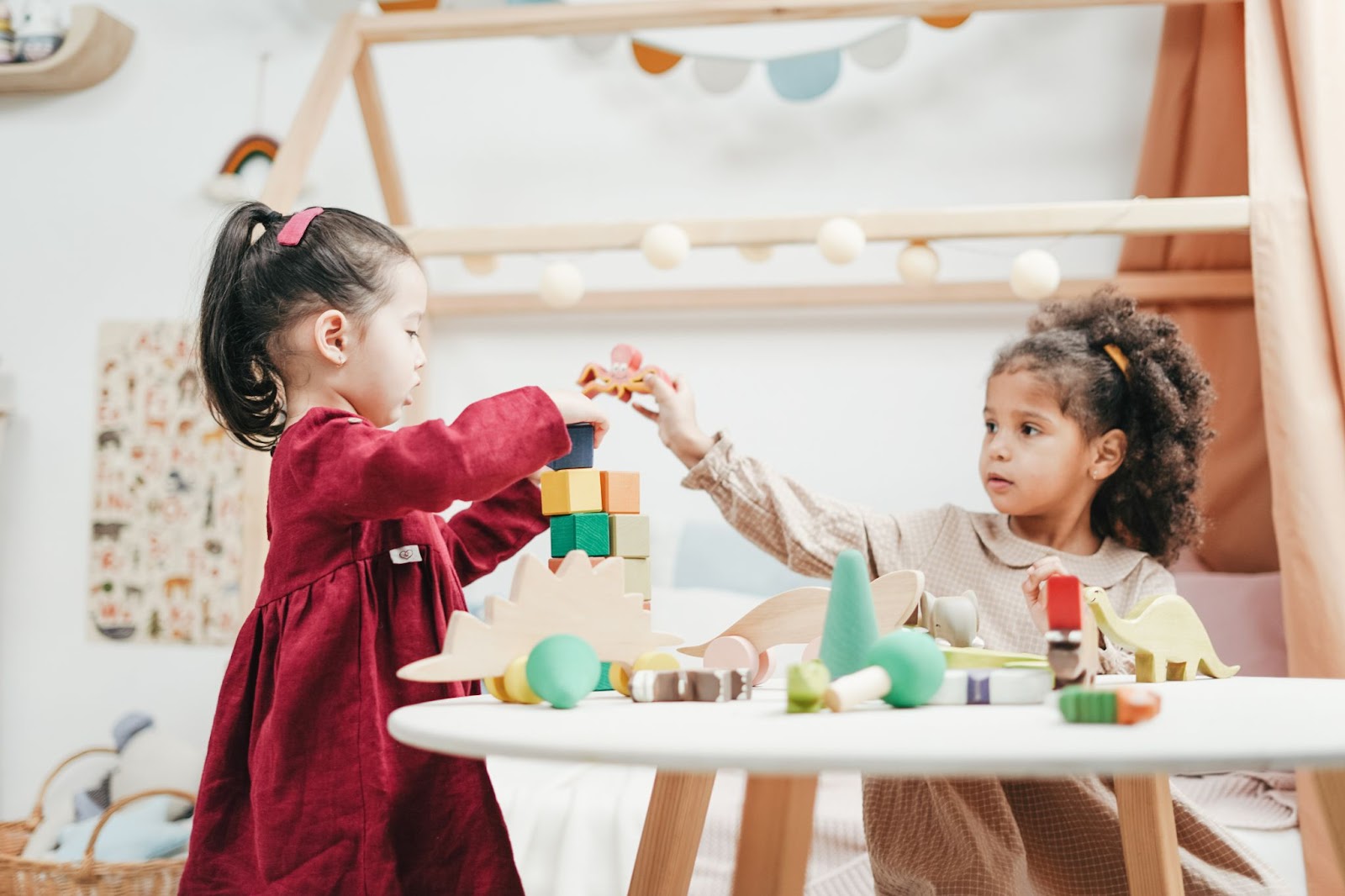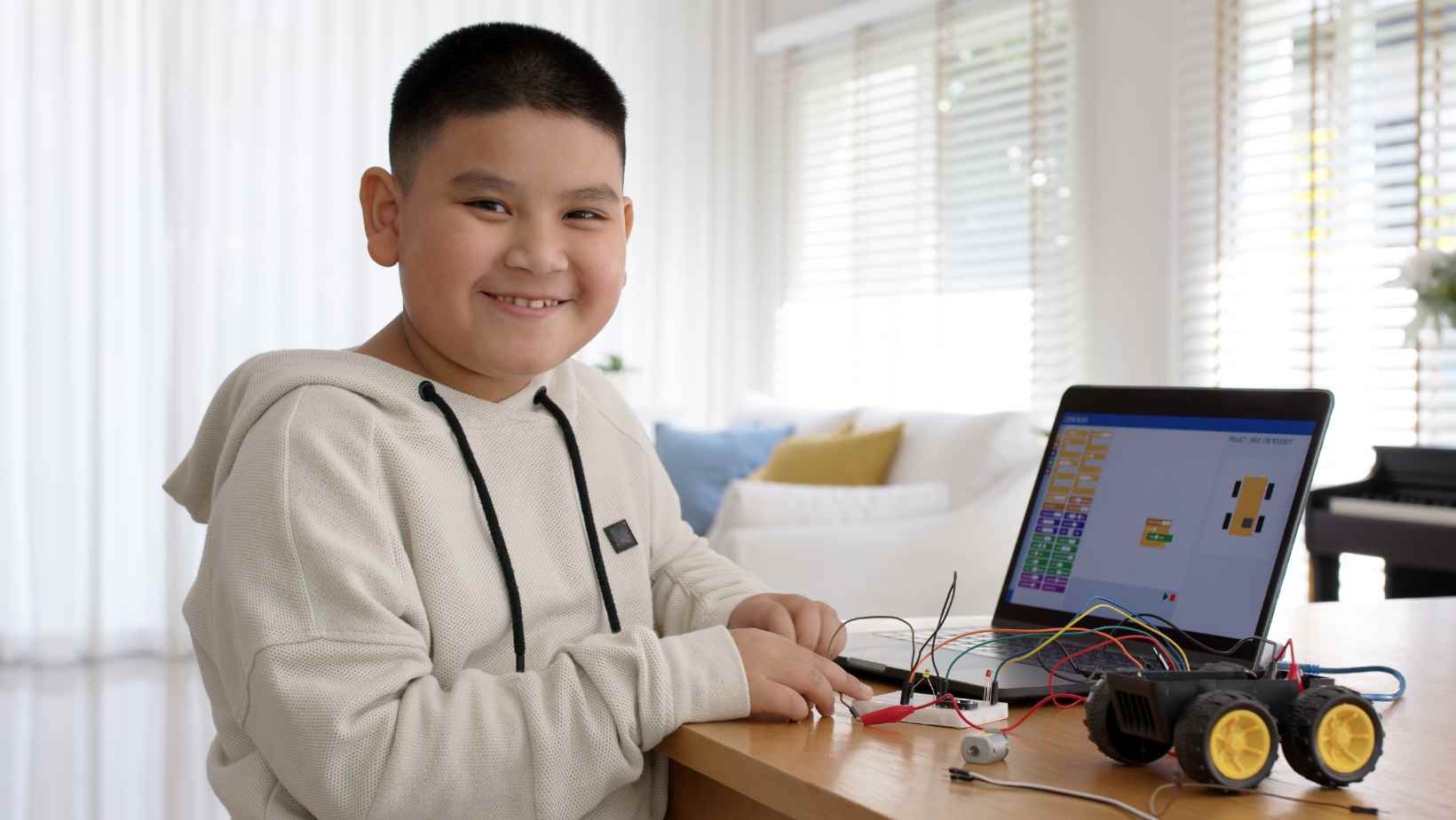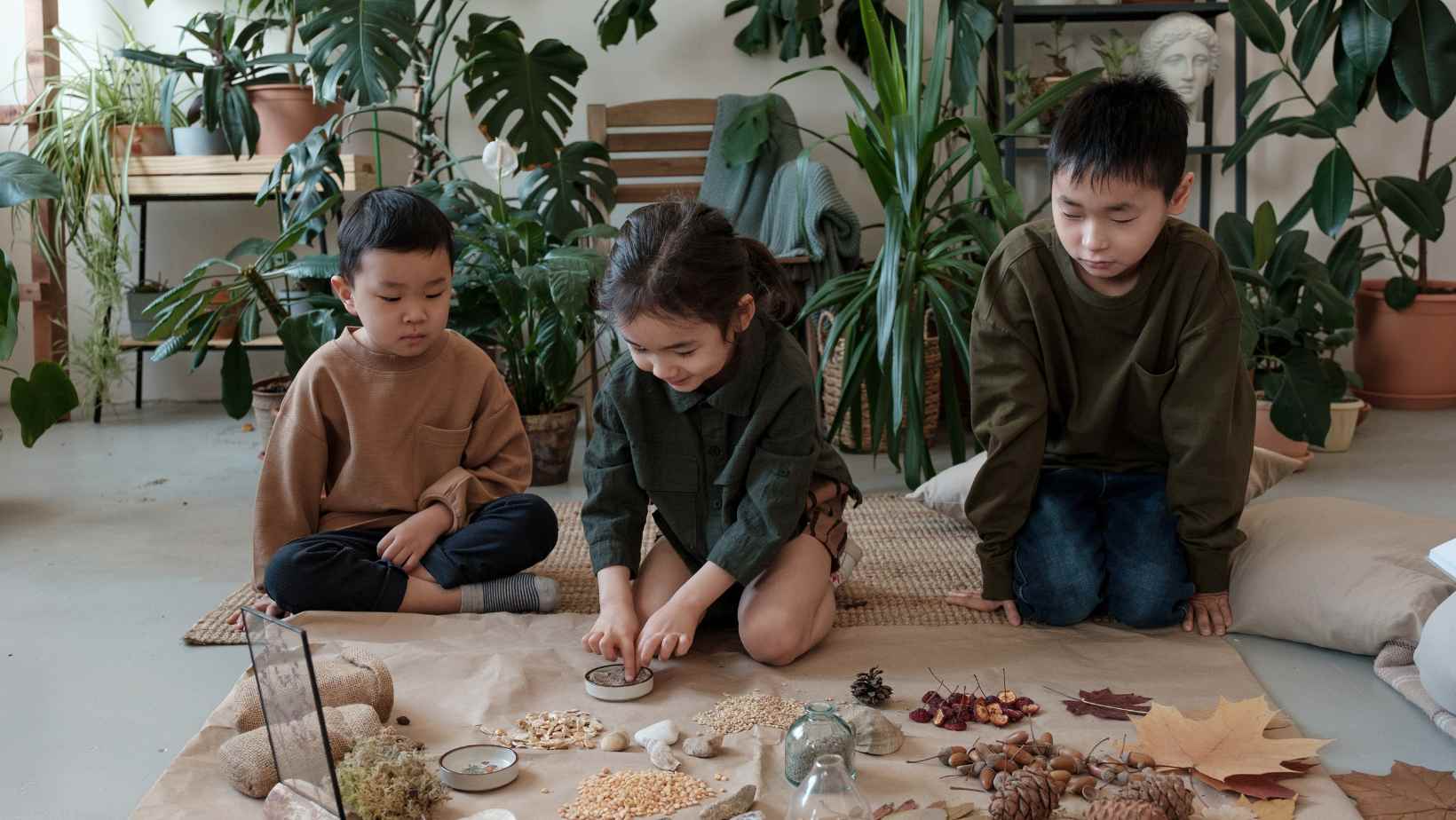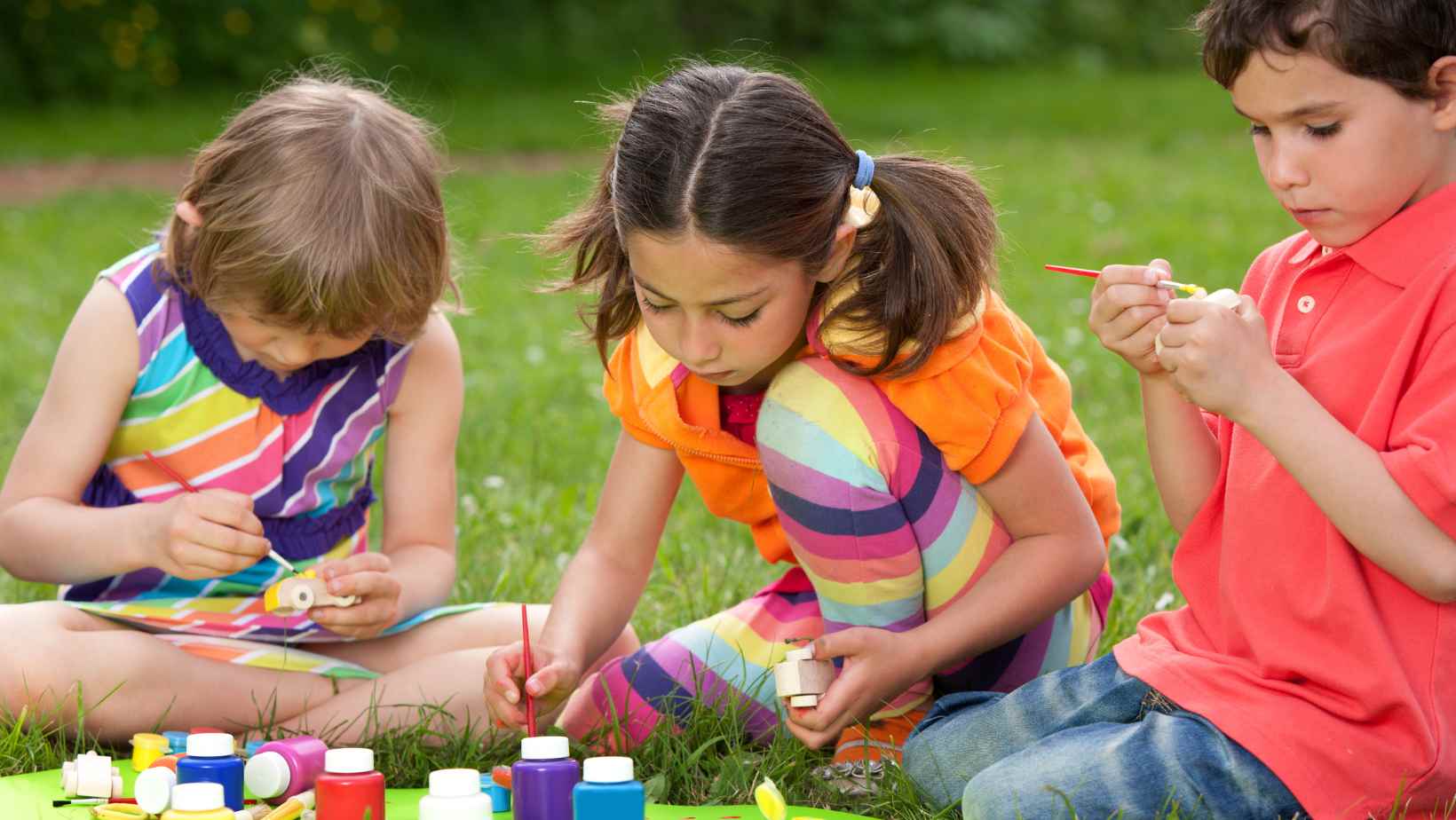Are you tired of hearing “I’m bored” from your kids? Are you looking for fun and educational ways to keep them entertained and engaged at home? Look no further! I have compiled a list of exciting and hands-on science activities that your kids can do right at home.
With just a few household items, your kids can conduct their own science experiments and learn about everything from the properties of water to the chemical reactions that power our world. These activities are not only fun and entertaining, but they also encourage critical thinking and problem-solving skills.
From creating homemade lava lamps to making a balloon-powered car, there is something for everyone on this list of science activities for kids to do at home. So, roll up your sleeves, get ready to learn, and let’s dive into some science fun!
Science Activities For Kids to do at Home
Looking for ways to keep your kids entertained and engaged at home while also teaching them something new? Look no further than these fun and easy science experiments! Designed for kids of all ages, these experiments use simple materials found around the house to explore everything from chemical reactions to the power of air pressure.
1. Homemade lava lamp Fill a clear glass jar three-quarters full with vegetable oil and the remaining one-quarter with water. Add a few drops of food coloring and an antacid tablet, and watch as the water and oil separate and create a mesmerizing lava lamp effect.
2. Balloon rocket launcher Attach a straw to a balloon with tape, then thread a string through the straw and tie it between two chairs or other objects. Blow up the balloon and let it go, watching as the escaping air propels the balloon and creates a rocket effect.
3. Static electricity levitation Cut a strip of tissue paper and fold it in half lengthwise. Rub a balloon on your hair or a wool sweater to create static electricity, then hold the balloon near the tissue paper strip and watch as it magically floats in mid-air.
4. Fizzy lemonade Fill a glass with lemonade and drop in a few raisins. Watch as the carbon dioxide in the lemonade reacts with the raisins to create bubbles that make the raisins dance up and down.
5. Rainbow milk Add a few drops of food coloring to a shallow dish of milk, then add a drop of dish soap to the center of the dish. Watch as the soap disrupts the surface tension of the milk and causes the colors to swirl and mix together like a rainbow.
These science activities for kids to do at home are not only fun, but also educational, helping children understand and appreciate the world around them. By using simple materials and easy-to-follow instructions, these experiments are sure to provide hours of entertainment for the whole family.
Make Your Own Bouncy Balls
Looking for a fun and hands-on science experiment that you can do with the kids at home? Why not try making your own bouncy balls! This simple yet entertaining DIY activity will not only keep your little ones engaged for hours, but it’s also a great way to introduce them to some basic science concepts.
To get started, you will need a few simple ingredients:
- Borax powder
- Cornstarch
- White glue
- Warm water
- Food coloring (optional)
First, mix 1 tablespoon of borax powder with 1/2 cup of warm water in a small bowl. In another bowl, mix 2 tablespoons of cornstarch with 1 tablespoon of white glue and a few drops of food coloring (if desired). Slowly pour the borax solution into the glue mixture, stirring constantly until it forms a slimy ball.
Next, remove the ball from the bowl and knead it with your hands until it becomes less sticky and more pliable. Roll it into a ball and bounce it on a hard surface to test its elasticity.
This activity is a great way to teach kids about the properties of polymers and how they work. They will be fascinated by the way the ingredients react to form a bouncy ball that can be played with again and again.
So, why not set aside some time this weekend to try this exciting science project with your kids? It’s sure to be a hit!
Create Your Own Invisible Ink
Are you looking for exciting science activities for kids to do at home? Creating your own invisible ink is a fun and easy experiment that will ignite your child’s curiosity and inspire them to learn.
Here’s what you need to create your own invisible ink:
- Lemon juice
- Water
- Cotton swabs or paintbrushes
- White paper
- A lamp or heating device
First, mix equal parts of lemon juice and water in a bowl. Then, using a cotton swab or paintbrush, use the lemon juice mixture to write a secret message on a sheet of white paper. Wait until the lemon juice dries completely.
Once the juice has dried, hold the paper up to a lamp or heating device. As the paper heats up, the lemon juice will darken, revealing the secret message to your child.
This awesome experiment demonstrates how acidic substances like lemon juice can be used to create invisible ink. Lemon juice is an organic substance that oxidizes when heated, turning brown and revealing the message written on the paper.
Creating your own invisible ink is a great science activity for kids to do at home, and it provides an exciting way for them to learn about the chemical reactions that occur with different substances. Give it a try and see what secrets you can uncover with your invisible ink!
Make a Lava Lamp
If you’re looking for a fun and easy science experiment to do at home with your kids, making a lava lamp might just be the perfect choice. This activity is not only entertaining but also gives children the opportunity to learn about density and chemical reactions.
Here are the steps to make your own homemade lava lamp:
Materials
- Clear plastic bottle or vase
- Vegetable oil
- Water
- Food coloring
- Alka Seltzer tablets
Steps
- Fill the plastic bottle or vase about ¾ full with vegetable oil.
- Add water to the bottle, leaving about an inch of space at the top.
- Add several drops of food coloring to the mixture and stir until the color is consistent.
- Drop half an Alka Seltzer tablet into the bottle and observe as the reaction takes place.
- Once the fizzing stops, drop another half of the Alka Seltzer tablet into the bottle and watch the lava lamp come to life.
As the Alka Seltzer tablet dissolves in the water, it produces carbon dioxide bubbles that rise to the surface. When the bubbles reach the vegetable oil, they pop and the colored water droplets fall back down due to their higher density, creating the appearance of lava.
Making your own lava lamp is not only a fun activity for kids, but it also gives them a chance to explore the properties of liquids and gases. So, why not try it out and see for yourself how exciting science activities for kids can be?
Explore Surface Tension With Water
Water is an amazing substance with unique properties that make it fascinating to explore. One such property is surface tension, which is the ability of a liquid to hold itself together in a particular shape due to the attraction between molecules. To showcase this concept to kids, there are many fun science activities that can be done at home using water. Below I will share with you a few simple yet engaging experiments to explore surface tension with water.
- Water Droplet Race
This activity requires a flat surface (such as a table), a few water droppers, and two or more kids. All they need to do is place a water droplet at the start line and blow on it to move it to the finish line, without touching it. The player who reaches the finish line first is the winner.
- Magic Milk Experiment
In this activity, kids will observe how surface tension changes. Add a drop of food coloring to a small dish of milk. The food coloring will stay on the surface. Next, add a drop of dish soap to the same spot. The food coloring will spread out. This is because of the release of surface tension by the soap.
- Penny Drop Experiment
For this activity, you need a glass of water and a few pennies. Kids should place the pennies on the table and try to drop them into the glass of water, one by one, without causing any splashes. The penny will sit on the surface of the water for a while before sinking. This is due to the surface tension of the water.
By exploring surface tension with water, kids can learn about one of the many fascinating properties of water. These activities are not only engaging, but they also help them to develop critical thinking, problem-solving, and observation skills.
Build a Straw Rocket
One of the exciting science activities for kids to do at home is building a straw rocket. The best part of this activity is that kids can learn about science and have fun at the same time. It’s also easy to do and requires very few materials.
To build a straw rocket, kids will need a straw, some paper, and tape. The first step is to fold the paper into a cone shape and tape it together. Then, tape the cone onto one end of the straw. After that, fold the other end of the paper cone inwards to form a pointy nose.
Once the rocket is complete, kids can try launching it into the air by blowing through the straw. They’ll be amazed at how far it will go! This activity is a great way to teach kids about the principles of aerodynamics, gravity, and force.
By experimenting with the design of the rocket, kids can also learn about how different shapes and sizes can affect how far it goes. They can try changing the size of the paper cone or the length of the straw to see how it impacts the rocket’s flight.
This activity is perfect for younger kids who are just starting to learn about science. It’s an excellent way to get them excited about the subject and encourage them to explore more. Parents can even turn it into a competition by challenging kids to see who can launch their rocket the farthest.
Overall, building a straw rocket is a fun and educational activity that kids can enjoy at home. It’s a great way to get them interested in science and spark their curiosity about the world around them.
Make Your Own Slime
Making your own slime is a fun and exciting science activity for kids to do at home. Not only does it provide a great sensory experience, but it also teaches kids about chemistry and chemical reactions.
To make your own slime, you’ll need a few simple ingredients:
- White school glue
- Water
- Borax
- Food coloring (optional)
Follow these instructions to create your own slime:
- In a mixing bowl, pour in 1/2 cup of white school glue.
- Add 1/2 cup of water to the mixing bowl and stir until it is fully combined with the glue.
- Add a few drops of food coloring to the mixture, if desired.
- In a separate bowl, mix 1 teaspoon of Borax with 1 cup of warm water until the Borax is fully dissolved.
- Slowly pour the Borax solution into the glue mixture, stirring constantly.
- Keep stirring until the slime starts to form and pull away from the sides of the mixing bowl.
- Knead the slime with your hands until it becomes more solid and less sticky.
- Store the slime in an airtight container when you’re finished playing with it.
It’s important to note that Borax can be harmful if ingested or if it comes into contact with the eyes. Make sure to always wash your hands thoroughly after playing with slime, and supervise young children to ensure they don’t put the slime in their mouths.
Making your own slime is a simple and engaging science activity that kids can do at home. It’s a great way to get them interested in chemistry and spark their curiosity about the world around them. Plus, it’s just plain fun!
Create a Homemade Volcano
For most kids, there’s nothing more fascinating than a volcano. Now, imagine making a simulated volcano eruption right at home! This activity is not only exciting but is also a fantastic educational opportunity in the science field. Making a homemade volcano is a fun and easy science activity for kids to do at home.
Here’s what you’ll need:
- An empty plastic bottle
- Baking soda
- Vinegar
- Craft supplies to design the volcano’s structure, such as cardboard, paper mache, or clay
- Red and yellow food coloring (optional, but it adds to the realism)
- Dish soap (optional)
Follow these instructions to make the volcano:
- First, construct the volcano structure using your preferred craft supplies and set it on a tray or a basin.
- Add 2 tablespoons of baking soda to the bottle.
- Mix in a few drops of red and yellow food coloring to intensify the eruption’s appearance.
- Add a squirt or two of dish soap, which helps create volcanic fizz.
- Slowly pour vinegar into the bottle, and watch the explosion!
The baking soda and vinegar reaction create a gas called carbon dioxide, which explodes out of the bottle like lava. When this happens, it mixes with the dish soap to create a bubbly and realistic-looking lava eruption.
This activity is both easy and entertaining to the kids. It provides them with a fun learning experience that they can share with family or friends. Additionally, it initiates a conversation about how volcanic eruptions occur in nature. Volcanoes have fascinated people for centuries, and with a simple DIY project as such, your child can participate in a hands-on science activity that leaves a lasting impression.
In conclusion, creating a homemade volcano with the help of baking soda and vinegar is a perfect science activity for kids to do at home. This experiment encourages kids to be creative, curious and helps them learn more about science in an accessible and entertaining way.
Grow Your Own Crystals
Growing crystals at home is a fascinating science experiment for kids. Not only is it interesting, but it’s also a fun and easy way to teach children about the formation of crystals and the science behind it.
To get started, you’ll need a few materials:
- Borax powder
- Water
- Pipe cleaners or string
- A wide-mouthed glass jar
- A stick or pencil
Here’s how to turn these ingredients into vibrant, unique crystals:
- Begin by making the crystal structure. Bend a pipe cleaner or tie a string to a pencil, shaping it into a crystal shape. You could also create several crystal shapes for a more extensive variety of crystals.
- Tie the string or pipe cleaner to a stick, making sure that




